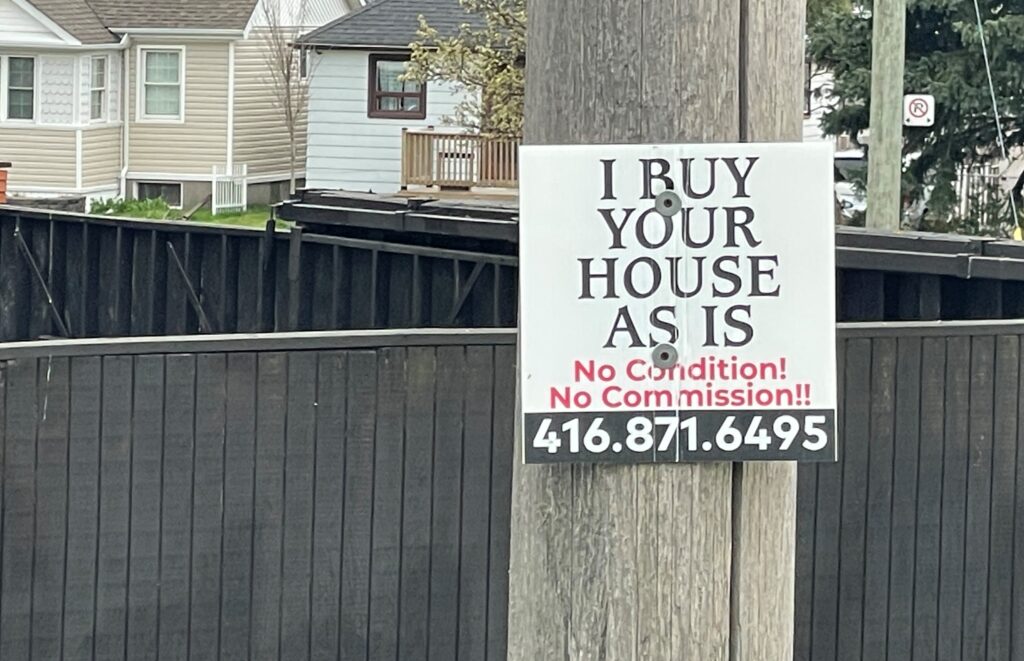Did anybody ever watch the television show, Married…With Children?
I did.
In fact, I was practically raised on it…
The show was about a dysfunctional family from Chicago and much of the humour was expressed through the family members taking shots at each other. The parents, especially.
While many groups in the United States advocated against the show (ie. religious groups, citing the deterioration of the American family unit), this show actually helped me to feel normal about my own dysfunctional family.
Not every family was like those on Growing Pains, Full House, or The Cosby Show, after all.
Eventually, Married…With Children moved up the charts and became one of the best-known sitcoms of the early-to-mid 1990’s.
Today, you’d recognize “Al Bundy” from his role on Modern Family, and you’d recognize “Peggy Bundy” from her role on Sons of Anarchy.
But there’s a scene from the early years of the show that my brother I and I always joked around about.
It’s when next-door-neighbour, Steve Rhoades, tries to explain to Al that he has to chase his dreams!
It goes like this…
Marcy: “Oh, God, Steve, don’t tell everyone about your insane quest to create a 99-cent coin.”
Steve: “Al… I invented the 99-cent coin. Have you ever noticed how things cost $7.00 and 99 cents? $14.00 and 99 cents? $99.00 and 99 cents? Well, my coin would eliminate the messy change that only catches the attention of those obnoxious beggars who hassle you on your way to your Mercedes. Think of it, Al. Anything you want. You just plunk down old number 99. It’s a plan without flaws.”
Al: “But what about tax?”
Steve: “You sound just like those fools in the treasury department…”
My brother and I immediately discovered the flaws in this comedic routine.
For one thing, Steve was smart. He never would have thought this would work.
Secondly, Al was dumb. He’s not the person that’s going to point out the tax implications.
Nevertheless, it got me and my brother thinking about why everything always ends in $.99.
We didn’t have the benefit of the Internet back then, so we had to use critical thinking. That, and asking our elders…
But we do have the Internet now!
Here’s an excerpt from a CBC story from 2018:
Over 60 per cent of all prices in all stores end in the number 9.
Prices ending in 99 cents are powerful because we are conditioned to think 99 cents is a bargain, no matter how small the saving.
It’s interesting that people don’t perceive much difference in value between items priced at $20 and $25. But drop the price by one penny, and they perceive great difference between $19.99 and $24.99.
The power of the number “9” isn’t confined to the cents column, either.
One American clothing retailer experimented by changing the price of a dress from $34 to $39 dollars and increased sales by over 30%.
Meaning – higher prices ending in a “9” will actually outperform lower prices – on the very same product.
The alluring thing about 99-cent pricing is that it feels like a sale price.
I think we all know this but we don’t want to admit it!
Nobody can be that impressionable, right?
We all know that $23.99 is actually $24, and yet, this is how sales and marketing has worked since the dawn of time!
Well, not the dawn of time, but at least since the late-1800’s.
From the article above, the origin of the 99-cent pricing is, if this is true, fascinating:
It’s trackable as far back as 1875. At that time, a paper called the Chicago Daily News was founded. It sold for one cent.
The problem was there weren’t enough pennies in circulation. So the owner of the newspaper went to the retail stores who advertised in his paper, and asked them to lower the prices on their goods by one cent.
The merchants agreed to help the paper out.
Then the newspaper owner had barrels of pennies shipped in from Philadelphia to provide the circulation of change.
At the same time, distant merchants began shipping their products to the Windy City via the new railroads, giving the local stores competition. But those Chicago store owners noticed that the odd pricing helped them undercut these new competitors.
The odd pricing actually increased sales.
Spend some time on Google and you’ll find all kinds of “origin stories” about 99-cent pricing as well as many merchants to are credited with being the first to do it, from mom-and-pop stores to major merchants and departments stores from the late-1800’s and early-1900’s.
There is a lot of psychology involved in pricing.
The left digit effect.
Even vs. Odd pricing.
Charm pricing.
Prestige pricing.
Price anchoring.
Decoy pricing.
And so on…
My “favourite,” and I mean that somewhat cynically, is the $19.99 price tag that says “Marked Down From $28.99.”
Was it?
Was it actually marked down from $28.99? Or is that just a nice way of getting into people’s minds and making them feel like the product is a deal at $19.99?
Of course, some retailers ran afoul of this years ago, and that’s why we now see “Compare At $28.99” instead of “Marked Down From $28.99,” but I don’t think consumers differentiate, especially since most of these psychological pricing exercises are designed to solicit a subconscious response.
So how do we price in real estate?
And I don’t mean in terms of “under-pricing” and then holding back offers as a strategy.
I’m talking about the list price, whether there’s an offer date strategy, or not.
Perhaps the best way to explore, discuss, and explain, is to look at what we do, what we don’t do, and what confuses us when we see it…
–
We always price with $900 below $1 Million, but we drop that $900 once we’re above $1 Million.
We’ll list at $599,900.
Or $589,900.
Or $579,900
But over $1,000,000, we drop the last “900.”
For example, it’s $1,799,000, not $1,799,900.
Why?
It’s cleaner.
You might think, “Hey, that costs the seller-client $900!” But if the property is under-listed, then it’s going to sell for more, and the $900 isn’t lost, and if it’s sitting on the market, then the price would probably be negotiated downward anyways.
The more digits, the worse that other “900” looks. $2,999,000 is nice and clean but $2,999,900 doesn’t feel as nice.
–
We never use $999 at the end of prices.
$579,999. No way. I hate that.
$1,579,999? That’s even worse.
$4,999,999? There’s something off-putting about that.
–
We use $900’s even when the list price is on the quarter or the half.
For example, $624,900. Or $649,900.
Not $625,000. Not $650,000.
–
We never use 800’s.
I don’t know when, but the $99.99 started to become $99.98 in some circles.
$1.98 for a product instead of $1.99.
It’s been done. It’s not uncommon.
But $579,800 isn’t something we do. We’re boring. We stick to $579,900.
–
We don’t use 500’s. Except when we do.
Just as the $9.99 pricing scheme eventually ceded a small portion of ground to the $9.98 technique, we have also seen our fair share of $9.95 offerings over the years.
I have no problem with $995,000. In fact, I kind of like it.
I would still price at $999,000, however, there is a point where I start to use 5’s instead.
What looks better: $1,999,000 or $1,995,000?
Tell me there’s no difference, that’s fine.
But when you get to $2,899,000 versus $2,895,000, I much, much prefer the latter.
Why? I don’t know. Maybe it’s different for everybody, or maybe my obsessive-compulsive disorder is turning this blog post into a weirdo-coming-out party. But I think $2,895,000 looks……in a word……classier than $2,899,000.
–
I find even numbers to be confusing.
You’re used to seeing a listing at $579,900 or even $579,000.
But $575,000?
That’s odd.
It’s entirely reasonable, and to be fair, the price of real estate isn’t fixed and is quite subjective, so nobody can really say that a property is worth $585,000, not $580,000, and not $590,000, so the middle-ground pricing has always seemed strange to me.
–
Can we talk about the 8’s?
This shouldn’t be the elephant in the room.
The number eight is pronounced as “ba” in Mandarin and this is very similar to the word for wealth.
As a result, the number eight is a lucky number for much of the Chinese community.
However, I don’t understand pricing at $588,888.
Call me crazy, but if “8” was my lucky number, and I was pumping gas one morning and the tank filled, and spout shut off right as the dial showed $60.88, then I might think that’s a good omen for the day.
But a condo listed at $588,888? Surely that’s overdone, right?
I have Chinese friends and Chinese clients and not one of them has ever said anything positive about this practice. Most of them laugh, while some find it insulting, and yet some poke fun at themselves and say, “Well, you know we’re going to be interested!”
–
Lucky 7’s only work in a casino.
I’ve seen properties listed for $1,277,777.
It’s an odd look.
$377,777.
Eek.
$1,299,777? That might be even weirder than those above. Wouldn’t it just make more sense to stick with 900?
–
Differentiation can often backfire.
I believe the term is “peacocking,” right? For those of you who read Neil Strauss’ “The Game” back in the 2000’s?
Trying to be extremely different in order to draw attention might not always have the desired effect.
Two identical listings come out today: one is at $599,900 and the other is at $602,222.
You don’t want to admit it, but you’re wired to find the first one more normal. More non-threatening. More understandable. More….relatable?
It’s subconscious. Don’t beat yourself up over it.
–
Random numbers are ridiculous.
A property is listed for $1,214,618.
What the heck?
There’s a scene in the movie The Accountant where they note that people picking “random” numbers are far more likely to over-use certain numbers, while under-using others. It’s based on Benford’s Law, which suggests that in data sets, the leading number is more likely to be small. This is how they deduced that somebody was cooking the books, since the random numbers generated by an individual didn’t fit the Law.
I wonder what that analysis would say about the number I just picked…
Listing a condo worth between $580,000 – $600,000 for $583,642 probably isn’t going to have a positive effect. It might not necessarily have a negative effect, but I see zero upside.
And for the record, I just analyzed my own “random number” pattern, and I don’t use 3’s and 6’s very much. That’s why I used them above. Cool experiment.
–
I’m absolutely floored when I see even numbers, like $700,000.
Why not $699,000 or $699,900?
This makes no sense to me. It’s like kicking proven results in the face.
Somewhere among you, there’s a person who’s ready to shout, “I would much prefer that. I wouldn’t see or feel a difference. Just price it at $700,000, it’s all the same.”
But if that were true – for the
–
Is it time to define the “left-digit effect?”
There’s a reason that psychological pricing works.
People read from left-to-right, thus you want to have a lower digit presented first.
And what is a surefire way to always ensure that a lower digit is seen first?
Make everything end in higher numbers, ie. 99.
$24.99
Two is smaller than four, four is smaller than nine.
People read this left-to-right and their brain sees a smaller number than what’s really there.
Psychologists and marketing strategists have probably dedicated entire books to this subject, but this is as basic as we can explain it today, in the interest of time.
–
Alright then, it’s time to welcome your feedback, and please go ahead and tell me that you have hard-wired your brain to avoid any psychological games.
Before I go, however, I want to tell a story that I heard on a podcast years ago.
McDonald’s has long-dominated the hamburger market, let alone the entire fast-food market.
In the 1980’s, their quarter-pounder-with-cheese was the best-selling hamburger in America and other chains simply couldn’t touch them.
But then established chain, A & W, came up with a major threat to McDonald’s quarter-pounder.
What was it, you ask?
Well, just think of how 8-minute-abs became obsolete once somebody came up with the genius idea for 7-minute-abs.
Yes, you guessed it:
The Third Pounder.
One-third, that is.
A & W started to market, sell, and serve 1/3-burgers, looking to dominate McDonald’s and their 1/4-burgers.
But it didn’t work.
In fact, it was a spectacular failure.
Why?
Because – and I say this because it’s been written about so many times, and not because it’s my opinion – but a large majority of Americans in the 1980’s couldn’t understand fractions.
4 is larger than 3.
So 1/4 must be larger than 1/3
“Why would I pay more for a smaller hamburger?”
🙂
Have a great weekend, everybody!
































Marina
at 11:49 am
In my personal experience, anytime I see a weird price number, like $589,777 or $1,234,567, my first thought is, what are they trying to hide? What kind of crazy am I about to deal with?
Because norms and standards are kind of comforting. Why introduce an anomaly when you don’t need to?
It’s odd, because I find the opposite to be true with people. Like, if you meet a person who is just WAY TOO normal, you know they are hiding some terrible secret. A basement kill room. A money laundering operation. A porcelain doll collection.
But in business, norms are good. They tell you the person knows the game. They know the rules.
On top of that, I don’t know why some numbers look better than others, but they do. Real estate transactions are not the place to question reality.
JL
at 2:04 pm
Personally I always try to “reconvert” the marketing numbers back into rounded numbers which my brain can compare and work with more easily, but I know there’s a lot of literature supporting that this approach works.
I am surprised that it’s used at all price levels though; I can easily see grocery items selling better at 2.99 than 3.00 because few people stop to think too hard about the prices at that level, but for something like a home or new car, you would think the effect of seeing 54,900 vs. 55,000 would fade quickly as people spend (hours? days?) thinking about the purchase they are making and how much they are paying for it.
For real estate, is something like 599,000 vs 600,000 not also used for the purpose of targeting specific price ranges within search filters?
Different David
at 6:18 pm
Dont forget the realtor.ca selling price filters. By listing it at $1,000,000 you are taking it out of the selling range for people who search up to 999,999.
Even though this example is at the absolute top of their identified range, you would want to expose your listing to the most number of buyers, especially if you want extra dud offers to bump up your offer date sale price.
MWC
at 7:43 pm
Ah the Bundy’s!
Sunday nights at 9:00pm on FOX.
I feel as though it peaked in 1991 – 1995. That was a time when everybody you knew was watching.
Pete
at 10:45 am
Fascinating post! Almost all of it resonated with me and my own biases. But I didn’t get this one :
“For example, $624,900. Or $649,900.
Not $625,000. Not $650,000”
I much prefer the second pair for some reason. They look lower to me (even though they are higher)! I think it’s the 000s at the end, as opposed to the 900s.
Would love more posts that examine the psychology of real estate 🙂